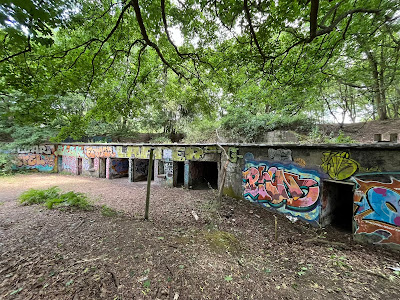The rivalry between France and Britain in the 1870’s again raised the fear of invasion. To meet such a threat, Colonel Ardagh laid out a defence scheme for the United Kingdom. His key assumption was that an invading enemy’s objective was to be London. His scheme recommended garrisons for the defence of naval bases and commercial ports, a mobile field army concentrated in the south of England and all volunteer troops not required for the defence of ports or naval bases to occupy positions selected for the defence of London.
The most likely landing place, where an army would only be a few days march from London, would be between Portsmouth and Harwich; the next best stretch of coast would be between Great Yarmouth to Harwich. Thus, the Field Army, covered by its cavalry and the Imperial Yeomanry, were to be distributed along a front stretching from Aldershot-Gravesend-Colchester. Behind this front, a second line of 10 main positions was to be manned by Volunteers organised into one division for each of the main positions. The entire line was to be entrenched and known as the London Defence Positions.
.
Above: Map of the London Defence Positions showing the 10 main positions. The Guildford and Darenth Positions had entrenchments thrown out on the flanks (the Shire Extension and the Darenth Valley Extension). The outlying Wrotham entrenchment provided a link between the London Defence Positions and fortress Chatham.
However, in peace time only a number of small works were to be constructed. These small works were known as ‘Mobilisation Centres’ and were intended to keep in reserve the necessary tools and ammunition in peace time and used as tactical pivots in times of war. In the event of an invasion, the Volunteers allotted to the London Defence Positions were to concentrate at predetermined camping ground in the rear of the Positions. Their main duty would be to ensure the completion of their allotted positions for defence although the bulk of the entrenchment was to be carried out by civilian labour. The entrenchments had been designed for two Army Corps should the Field Army have to fall back on the Positions. It was anticipated that the Volunteers Divisions could be concentrated at the point the Field Army fell back on so that the maximum force available could meet the enemy.
The Redoubt
Where possible, the Mobilisation Centres utilised existing forts, but the North Weald Redoubt was a newly constructed fort, with work starting on it in 1889. It sits on commanding high ground to the southeast of the village of North Weald. It is ‘D’ shaped in profile. The front of the redoubt, semi-circular in profile, consists of a rampart behind which are sunken concrete casemates which were used to store ammunition and field artillery. The field guns would have been wheeled out of their casemates and positioned on the roof or prepared gun pits.
Above: Magazines and gun casemates behind the defensive ramparts.
The rear of the fort consists of ditch (now flooded) and a further row of concrete casemates which served as accommodation and stores. The ditch is defended by a caponier. The access to the fort was over the roof of the caponier, with two concrete pillars which would have had gates mounted on them.





Comments
Post a Comment